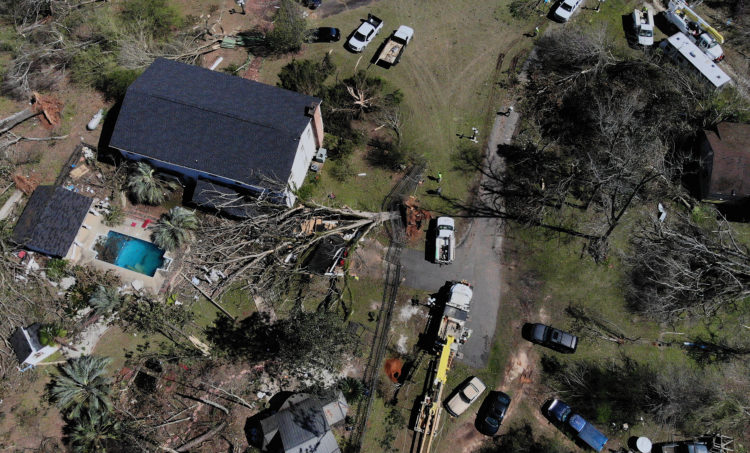Twenty-three people were killed when a powerful storm produced multiple tornadoes that hit residential areas of southeastern Alabama last weekend. In the aftermath of the disaster, rescue crews began the tedious task of digging through the debris of houses and trailers, looking for survivors. In years past, first responders had to do this work by hand, occasionally employing a specially trained canine unit for help. However, rescue crews in Alabama had a new tool to aid them in this search — thermal imaging-equipped drones.
“They gave us an overhead view of areas we might have missed had we been at eye level on land,” said Lee County Sheriff Jay Jones, while speaking to the Associated Press.
Whether the drones actually located any victims is unclear, but first responders claim the drones gave them peace of mind, knowing no one was missed in the rubble. The drones were able to give rescue crews a bird’s-eye view of destroyed buildings and damaged structures that would have been difficult to search on foot. Any type of heat source shows up in yellow, orange, red, or white on the video monitor, depending on the temperature.
This technology has been used by the military for some time and has played an essential role in the War on Terror, however, many public safety agencies in the U.S. and across the world have also begun to deploy these heat-seeing drones for search and rescue. First responders in China, Nepal and Mexico have used drones fitted with different types of camera systems for both rescue work and law enforcement missions with a good deal of success.
Although police helicopters in major cities have been equipped with this type of thermal camera for decades, many smaller departments with limited budgets are unable to afford expensive aircraft. With drones, airborne heat-viewing surveillance is cost-effective. The mobility of drones also allows crews to deploy the asset in minutes instead of the hours sometimes required to find a helicopter equipped with the technology and a competent, well-rested crew to fly it.
With drones becoming an increasingly important tool, several companies are specializing in thermal imaging cameras designed specifically for these small, unmanned aircraft. According to UAV Coach, firms such as FLIR, DJI, and Yuneec are all bringing products into the market for civilian and government use. With many products available for under $10,000, there is enormous growth potential for these types of systems.
“It’s an amazing tool,” said Marty Dunn, a detective with the Hamilton County, Tennessee Sheriff’s Office, who recently used his drone to locate a potentially dangerous suspect who had fled into a wooded area. “It worked out for the best.”
Already have an account? Sign In
Two ways to continue to read this article.
Subscribe
$1.99
every 4 weeks
- Unlimited access to all articles
- Support independent journalism
- Ad-free reading experience
Subscribe Now
Recurring Monthly. Cancel Anytime.









